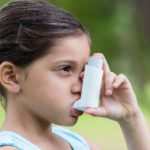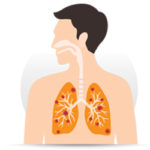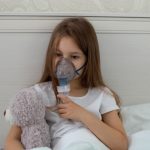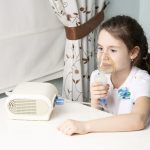Respiratory
Procalcitonin, C-Reactive Protein and White Blood Cell Levels Help to Differentiate Acute Bacterial or No-Bacterial Infections in Children
A recent retrospective study published in the ‘Nature Journal of BMC Pulmonary Medicine’, reported that Procalcitonin (PCT), C-Reactive Protein (CRP) and White Blood Cells (WBC) are effective indicators for identification of acute bacterial or no-bacterial infections in children.
The study included a total of 348 children with acute respiratory tract infections (ARTI), with an aim to evaluate the correlation between PCT, CRP, and WBCs and different types of ARTI including bacterial viral, and mycoplasmal infections.
The key results findings were as follows:
- The levels of PCT, CRP and WBC in children with a bacterial infection were significantly higher than those with viral and mycoplasmal infections.
- The positive rate of combined detection of PCT, CRP and WBC were significantly higher than that of single detection.
- There were no significant differences in PCT, CRP, WBC levels and diagnostic positive rates between gram positive and gram-negative bacterial infection groups.
Thus, the results of the study indicated that the levels of PCT and CRP have higher differential diagnostic value than that WBCs in infection, and combined examination of the three significantly improves the positive rate of diagnosis.
Li, Y., Min, L. & Zhang, X. Usefulness of procalcitonin (PCT), C-reactive protein (CRP), and white blood cell (WBC) levels in the differential diagnosis of acute bacterial, viral, and mycoplasmal respiratory tract infections in children. BMC Pulm Med 21, 386 (2021). https://bmcpulmmed.biomedcentral.com/articles/10.1186/s12890-021-01756-4 Accessed on 9 December, 2021.

Short-Term Exposure to Secondhand Smoke Has Significant Effects on Asthmatic Patients
Read More

Patients Admitted for Asthma Exacerbations are Predominantly Obese and Have Poor Asthma Control at Baseline
Read More

Initiation of Mepolizumab in Severe Eosinophilic Asthma Reduces Usage of Oral and Inhaled Corticosteroids
Read More

Are Specific Types of Bacteria Related To Acute Exacerbations in Children with Asthma?
Read More

High Prevalence of Respiratory Symptoms after COVID-19 is Associated with Disease Severity Markers
Read More

Increased Patient Awareness of Chronic Obstructive Pulmonary Disease is Associated with Increased Adherence to Treatment
Read More

Hypertensive Disorders in Pregnancy Increase the Risk of Asthma in Offspring
Read More

Yoga Has Significant Positive Effects on Asthma Control in Children
Read More

Understanding the Differences of Clinical Outcomes Between Elderly and Adult Patients with Allergic Rhinitis
Read More

Can Montelukast Sodium Combined with Budesonide Aerosol Improve Airway Function in Asthmatic Children?
Read More

Treatment-Seeking Behavior of Young Hypertensives in India: An Analysis of NFHS-4
Read More

The IISc Finds A Novel Inhibitory Action of Montelukast Against the SARS-CoV-2 Virus
Read More

Risk Factors Accelerating Time-to-Diagnosis of COPD among Asthma Patients
Read More

As-needed Vs Maintenance Regimens in Mild Asthma – Patient Perspectives
Read More

Can Digital Mindfulness-based Interventions Improve Asthma-related QoL?
Read More

What are the Different Risk Factors Associated with Persistent Chronic Cough?
Read More

Severe Asthma/Asthma Exacerbations Before Pregnancy Can Increase Rate of Exacerbations During Pregnancy
Read More

Exercise Rehabilitation Has Positive Effects on Children with Bronchial Asthma
Read More

Inhaled Corticosteroids Can Be Used as a Measure of Adherence in Severe Asthma
Read More

Recurrent Lower Respiratory Tract Infections Are Associated With Earlier Diagnosis of Pediatric Asthma
Read More

Ciclesonide Effectively Improves Asthma Symptoms in Children
Read More

High Intensity Interval Training and Sprint Interval Training is Effective for Asthma Patients
Read More

Small-Airways Targeted Treatment with Smart Nebulizer Technology Reduces Asthma Exacerbations in Children
Read More

Low serum IgA levels in asthmatic patients with recurrent chest infections
Read More

Inhaler training can improve patients’ peak inhalation flow rate
Read More

Maternal Asthma Severity Associated With Higher Chance Of Adverse Perinatal Outcomes
Read More

The Effects of Smoking on Atopic and Non-Atopic Asthma Differ With Gender
Read More

Cardiorespiratory Endurance and Muscular Strength Are Not Reduced In Individuals with Asthma
Read More

Higher Intake of Preformed Vitamin A In Mid-Childhood Lowers Risk of Incident Asthma
Read More
